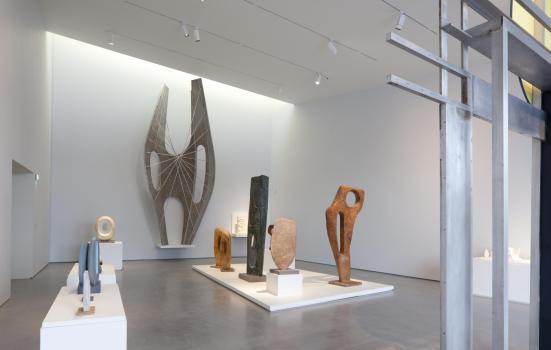The Hepworth Wakefield is blessed with many great pieces of modern British art, but a priority is to grow its collection. Simon Wallis discusses the gallery’s approach to new gifts and acquisitions.

Jonty Wilde, The Hepworth Wakefield
Wakefield’s growing art collection, which is now entirely housed at The Hepworth Wakefield, consists of over 5,500 works of art in all media. At the core of the collection is a significant group of work by Barbara Hepworth and Henry Moore, both born in the Wakefield area.
From its foundation in 1923, the original Wakefield Art Gallery adopted an ambitious and forward-thinking collecting policy with the core aim of nurturing a wide public understanding of contemporary art. It is fascinating to read the quote from Wakefield Councillor Alfred Carr, Chairman of the art gallery in 1934, saying: “Our idea is that we shall keep in touch with modern art in its relations to modern life.”
Having a collection, caring for it, researching it and exhibiting it is a resource-heavy activity that requires considerable and sustained investment
The Hepworth Wakefield continues that mission but now sets contemporary works of art within an art historical context, largely drawn from the collection.
Along with the strength of the collection, it was the Hepworth Family Gift, consisting of 44 full-size working models, that was the catalyst for The Hepworth Wakefield to be built. The gift was the surviving prototypes in plaster and aluminium made in preparation for the works in bronze that Hepworth executed from the mid-1950s to the end of her career.
A growing collection
Since it opened in 2011 the gallery has significantly expanded Wakefield’s art collection with works of art estimated at a value of £7m. This has been achieved through seeking grants from trusts and foundations and actively cultivating philanthropic generosity from individual collectors and artists.
Key acquisitions include works by recent Turner Prize nominee Anthea Hamilton, Frank Auerbach, Clare Woods, Eva Rothschild and now several hundred works from the recent Tim Sayer bequest.
Tim Sayer’s generous gift came after he visited the gallery to see the ‘Caro in Yorkshire’ exhibition last summer. He loved the quality of the architectural design and the art historical context and felt the gallery would be the perfect home for a substantial collection he has created over the past 50 years. He knew we would not simply accept a gift and put it into storage, rarely to be seen, and that we would value and use it for public benefit immediately.
Accreditation and procedures
By definition, the gallery has a long-term mission to hold the collection in trust for the benefit of the public. Our governing body ensures that sound curatorial reasons must be established before consideration is given to any acquisition.
We recognise our responsibility when acquiring additions to the collection, to ensure that care, documentation and use will always meet the requirements of the Museum Accreditation scheme.
This includes using Spectrum primary procedures for collections management and it also takes into account limitations on collecting imposed by such factors as staffing, storage and care of collection arrangements. Having a collection, caring for it, researching it and exhibiting it is a resource-heavy activity that requires considerable and sustained investment. We are now trying to develop gifts to the collection that have a cash component to address these issues.
Collection growth
Fortunately we still have physical room and the staffing capacity for many more acquisitions. Collection growth is important to us in the coming years and a key priority going forward will be to raise funds from philanthropic sources to create a collection acquisition fund that will allow us to purchase works regularly.
We have a moral responsibility to build on the inspiring founding principle of Wakefield’s art collection to ensure we have works that represent the best art of our time and add to the strengths we have developed in twentieth-century British modernism.
Collections are a vital legacy that public art galleries and museums need to keep developing and growing. Philanthropy underpinned so many of our public art galleries and now that interest in art has grown immeasurably in size in the past two decades there are many more collectors who might be minded to ensure their passion for art and artists has a wide public benefit by donating works to public collections.
Wider appreciation
As part of our fifth anniversary celebrations we have some new initiatives to get the collection even more widely seen and appreciated. These include displaying a Hepworth sculpture at our local Trinity Shopping Centre and a collection display at Wakefield One, one of the city’s major new civic centres. We are currently developing a new website to provide far greater access to the collection and share our research into it.
We are working to inspire people to create their own art collections and have recently launched the Own Art scheme at the gallery, which also supports the series of limited editions we commission by contemporary artists exhibiting at the gallery.
Simon Wallis is Director of The Hepworth Wakefield.
www.hepworthwakefield.org




